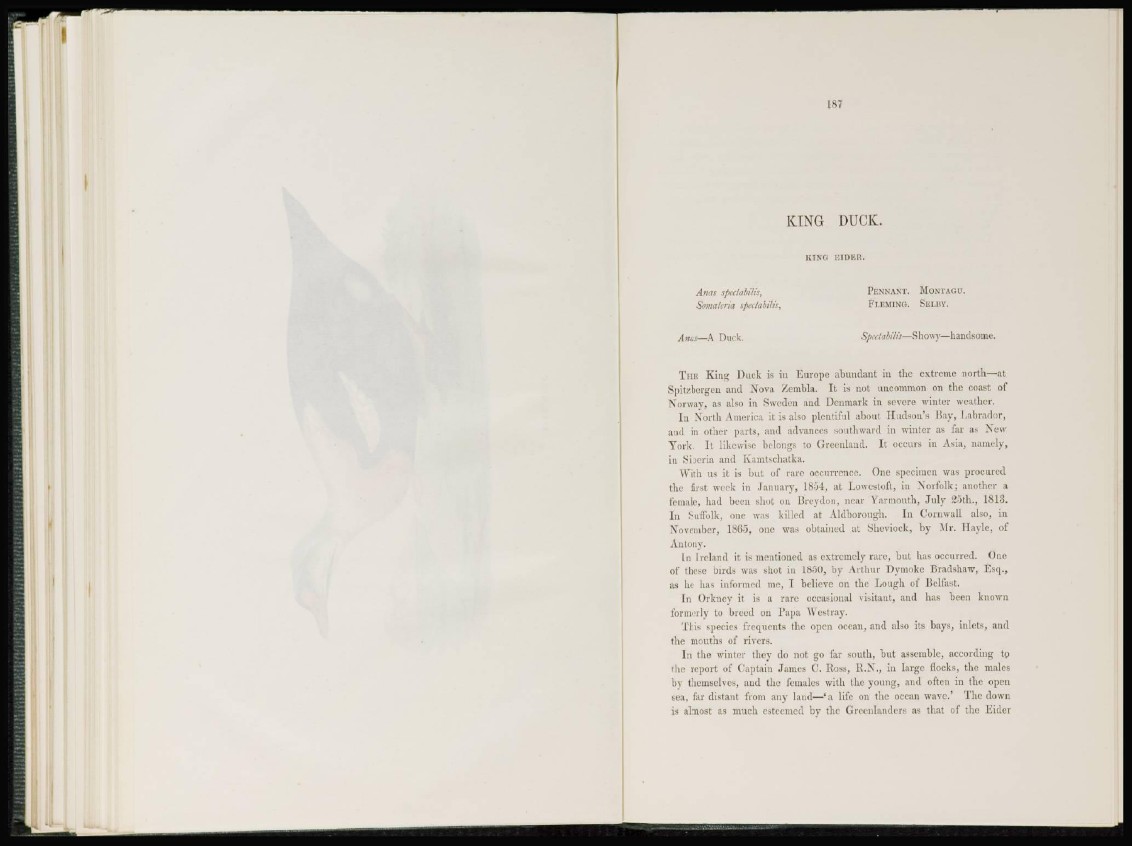
INT
KTNG DUCK.
K I N O EIDER.
Anas sptdabilis. PENNANT. MONTAGU.
Somahria sptxtabilis, FLEMING. SKLBY.
Anas—A Duck. Spectabilis—Showy—handsome.
THE King Duck is in Europe, abundant in the extreme north—at
Spitzbergen and Nova Zembla. It is not uncommon on the coast of
Norway, as also in Sweden and Denmark in severe winter weather.
I n North America it is also plentiful about Hudson's Hay, Labrador,
and in other parts, and advances southward in winter as far as New
York. It likewise belongs to Greenland. It occurs in Asia, namely,
in Siberia and Kamtschatka.
With us it is but of rare occurrence. One specimen was procured
the first week in January, 1804, at Lowestoft, in Norfolk; another a
female, had been shot on Brcydon, near Yarmouth, July ™->th., 1813.
I n Suffolk, one was killed at Aldborough. In Cornwall also, in
November, 1865, one was obtained at Sheviock, by Mr. TIayle, of
Antony.
In Ireland it is mentioned as cxtrcmelv rare, but lias occurred. One
of these birds was shot in 1850, by Arthur Dymoke Rradshaw, Esq.,
as he has informed me, I believe on the Lough of Belfast.
In Orkney it is a rare occasional visitant, and has been known
formerly to breed on Papa YVestray.
This species frequents the open ocean, and idso its bays, inlets, a nd
the mouths of rivers.
In the winter they do not go far south, but assemble, according to
the report of Captain James C. Boss, R.N., in large flocks, the males
by themselves, and the females with the young, and often in the open
sea, far distant from any l a n d—' a life on t h e ocean wave.' The down
is almost as much esteemed by the Greenlanders as that of the Eider